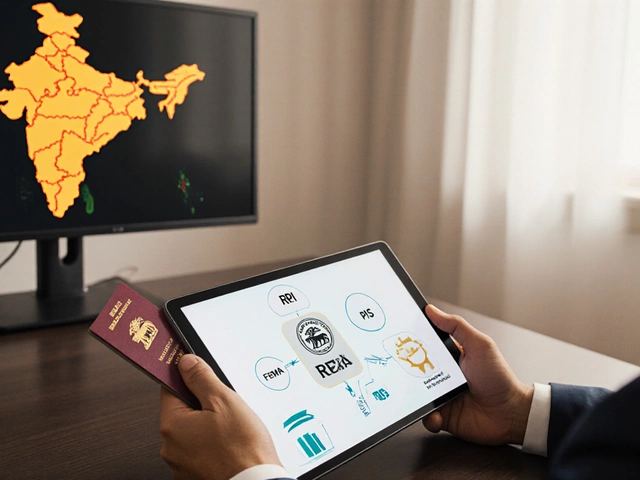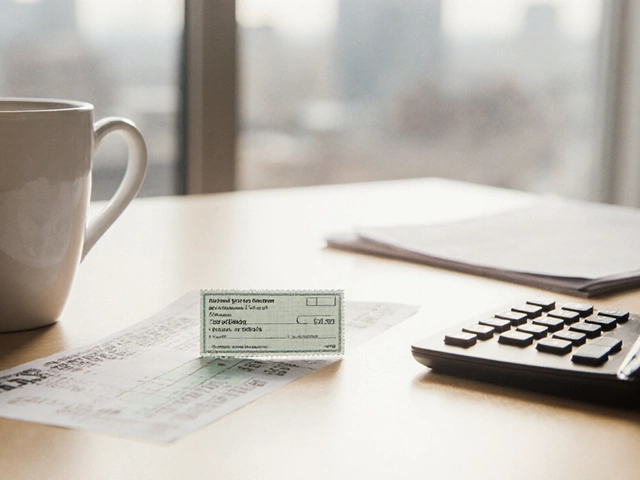
Choosing between a savings and a checking account can feel like picking between two shades of the same color. They're both bank accounts, right? But when you dig a little deeper, there are some surprising differences that matter.
First off, let's get one thing straight: safety is often the top concern for anyone when it comes to stashing cash. Both savings and checking accounts are considered safe since they’re typically insured by entities like the FDIC up to a certain amount. But, the game changes when you start considering what ‘safety’ actually means for you. Are you worried about potential overdrafts with your freebies or about someone swiping your debit card info?
- Understanding Savings and Checking Accounts
- Safety Features of Savings vs. Checking
- Interest Rates: Does Your Money Grow?
- Access to Your Money: Pros and Cons
- Tips for Choosing the Right Account
Understanding Savings and Checking Accounts
Walking into a bank, you'd be forgiven for feeling a bit overwhelmed by the jargon. To start with the basics, a savings account and a checking account serve different purposes, and knowing the difference can keep your finances in check.
The Purpose of Each Account
Savings accounts are designed to help you store money while earning a bit on the side via interest. It's the place you park your emergency fund or stash away towards that dream vacation. But, there's a catch—withdrawals are limited, often just six per month, thanks to federal regulations.
On the flip side, checking accounts are all about accessibility. Need to pay your Netflix bill or grab lunch from your favorite cafe? Your checking account is where that magic happens. It comes with features like debit cards and check-writing privileges for your day-to-day spending.
Cost Considerations
Let’s talk dollar signs. Some savings accounts have a minimum balance requirement to dodge monthly fees, whereas many checking accounts come with more lenient terms. But you might face fees there too if you're not careful about overdrafts or ATM charges. That's something to think about when choosing your bank accounts.
Banking Stats
Here's a quick peek at how popular these accounts are:
| Account Type | Average Balance (2023) |
|---|---|
| Savings Account | $5,000 |
| Checking Account | $1,250 |
Now you have a clearer picture of what both accounts bring to the table. As you weigh your options, think about your money habits, how much access you want to your cash, and any potential fees you'd rather avoid.
Safety Features of Savings vs. Checking
When it comes to keeping your money safe in a savings account or a checking account, both generally offer a solid level of security thanks to protection measures like FDIC insurance. This means if the bank happens to go belly up, your money is protected up to $250,000 per depositor. But there are nuances that might matter depending on how you use each type of account.
Fraud Protection
Both account types offer fraud protection, but checking accounts are usually more vulnerable just because you're probably using them more for everyday transactions. If someone gets hold of your debit card details, they could drain your checking account much faster than your savings.
Overdraft Protection
Want to avoid those pesky overdraft fees? A checking account might offer more straightforward options for overdraft protection. You can link it to a savings account to automatically transfer funds if you go over your balance. However, be cautious of the transfer fees that banks might slap on for this convenience.
Access Limitations
Savings accounts usually limit your transactions per month, typically around six. This limitation can be a sneaky form of safety, protecting your money from being casually dipped into. Sure, it’s annoying if you’re trying to transfer money all the time, but it means your cash won’t disappear quite as fast.
Physical vs. Digital Theft
While we're all worried about someone swiping our details online, don't forget the old-fashioned theft—physically stealing checks or debit cards. Savings accounts, which you might not link to as many payment options, are less exposed to this risk.
Overall, strategies for keeping your money in a savings account or checking account safe are about using the right tools offered by your bank. Always keep an eye on updates or alerts about your account to catch suspicious activity early.

Interest Rates: Does Your Money Grow?
When it comes to interest rates, a savings account usually takes the cake. It's like a little cheerleader for your money, helping it slowly but steadily grow, thanks to compound interest. According to data from 2023, the average interest rate for savings accounts in the U.S. was around 0.30%, but some high-yield accounts offer rates as high as 4.50%.
In contrast, most checking accounts aren't about boosting your balance with interest. They're more like convenient wallets for your daily expenses. Sure, there are interest-bearing checking accounts out there, but their rates often can't compete with what savings accounts offer.
Why Choose a High-Yield Savings?
If you're aiming to grow your extra cash without breaking a sweat, high-yield savings accounts have your back. They're perfect for parking an emergency fund or saving up for something special. Just be sure to check the account's fees and balance requirements so you're actually benefiting from those juicy rates.
Watch Out for Inflation
Here's the catch, though: even the best savings account interest rates might not keep pace with inflation. When prices rise, the real value of your nest egg can shrink. In 2023, inflation rates in the U.S. hovered around 3-4%, meaning your cash's buying power could get squeezed.
Learn more about inflation and savings here
For the budget-conscious or those who like a simple, no-fuss approach, a blend of checking and savings accounts can be the sweet spot. The checking part takes care of your daily expenses, while the savings does the heavy lifting of slowly growing your wealth.
Access to Your Money: Pros and Cons
When it comes to managing your cash flow, how easily you can dip into your funds might influence which account you lean towards. Checking accounts are usually your go-to for everyday spending. They come with a debit card and the ability to write checks. Plus, there's no limit on the number of times you can access your money each month.
On the flip side, a savings account serves as a place where your money can sit and grow, albeit slowly. Here's the kicker: the federal government limits withdrawals to six times per month. So, if you're the sort who likes to move money around often, keep this in mind.
According to Anthony Chan, former Chief Economist at JPMorgan Chase, "A savings account encourages individuals to build a financial safety net, but it requires more deliberation before accessing funds."
Pros of Checking Accounts
- Unlimited transactions make it hassle-free for frequent use.
- Easy access to both cash and funds via ATMs and check writing.
Cons of Checking Accounts
- May come with fees, particularly if you don't maintain the minimum balance.
- Typically offer lower interest rates compared to savings accounts.
Pros of Savings Accounts
- Encourages saving by restricting frequent withdrawals.
- Generally, offers higher interest rates, so your money can grow a bit.
Cons of Savings Accounts
- Limited withdrawals can be inconvenient for spontaneous spending.
- Transfer times from savings might delay access to funds.
It's a trade-off between easy access to funds with a checking account and the disciplined, slow growth of a savings account. Maybe you'll find that having both is the best-fit strategy, as it suits different needs in managing your money.

Tips for Choosing the Right Account
So, you're stuck between a savings account and a checking account, and wondering where your money should cozy up. Here's a cheat sheet to help you navigate your options.
Look at Your Spending Habits
Do you often pay bills and manage daily expenses? A checking account might suit you better since it offers more freedom when you want to move money. If your goal is to save up for something big or just let your cash grow a bit, a savings account could be your buddy.
Check Out the Interest Rates
Here's a reality check: savings accounts usually come with interest, albeit small. If you're in it for the long haul, this is the option to look at to make your money slowly work for you. Checking accounts, on the other hand, rarely offer interest. It's basically a trade-off between access and growth.
Consider the Fees
Both types of accounts might hit you with fees if you're not paying attention. Check the fine print for monthly maintenance fees, overdraft charges, or transaction limits. Some banks waive fees if you maintain a minimum balance, so know the bank's rules.
Think About Security
Both savings and checking accounts come with FDIC insurance up to a certain amount, keeping your money safe from bank ups and downs. But watch out for those online scams! Use strong passwords and keep an eye on suspicious activity.
Make the Most of Both
Who said you have to pick just one? Try a combo approach! Use a checking account for daily transactions and a savings account to tuck away funds for a rainy day. Automating transfers between them can help you manage your money like a pro.
- Consider online banks that might offer better interest rates.
- Read customer reviews to see if the bank's app and services suit your lifestyle.
- Remember, accounts with higher interest might have stricter rules, so weigh the pros and cons.
Arm yourself with this info, and you're ready to choose the account that works best for you. No need to overthink it – just align your choice with your financial goals!








Write a comment